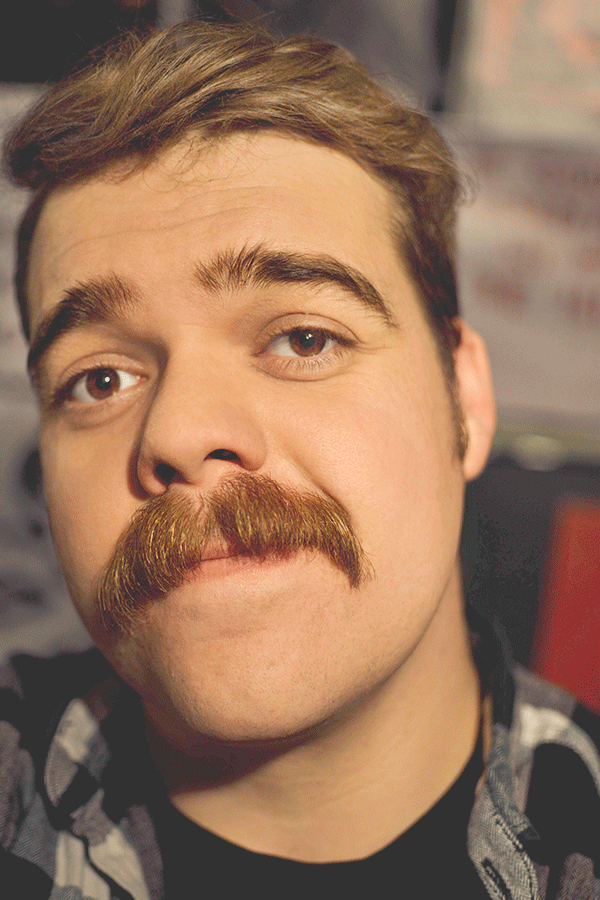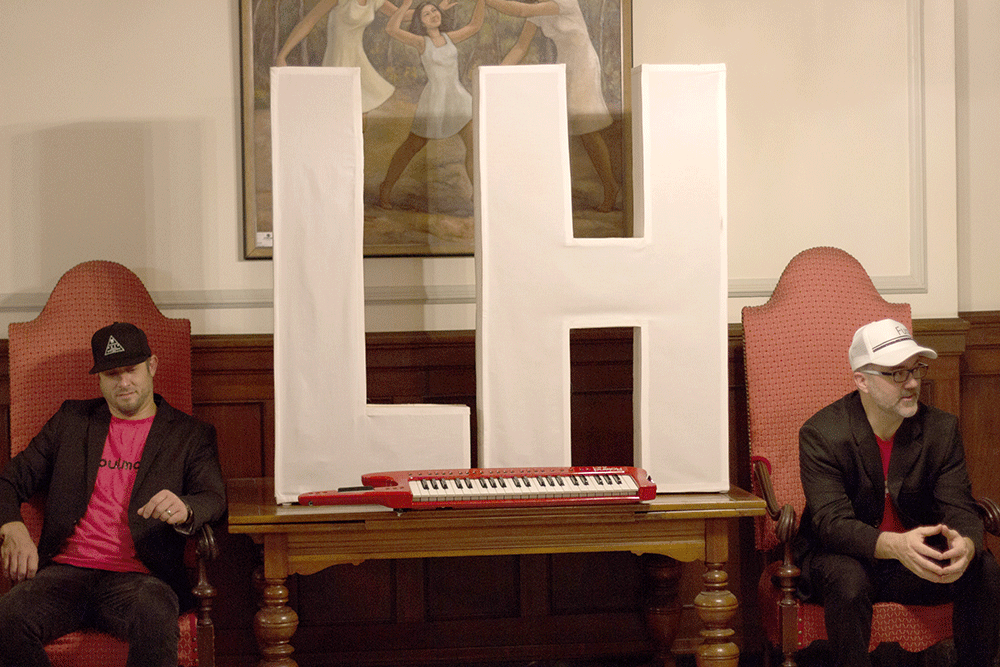Ian Ruisard is an artist with many gifts and ways to apply them. Labeling himself as a graphic artist, his talents shine through in a cohesive style that is recognizable yet versatile. Through design – including vector work, illustration, painting, photography and more, Ruisard – applies these talents, transforming sketches and physical drawings into the pristine and, at times, minimal designs littering his portfolio. At a young age in Warsaw, Ruisard was exposed to art through vintage, illustrated children’s books his mother read to him. Ruisard’s parents preferred reading to their children over placing them in front of the television.
“I think that has a lot to do with why my sister and I clung to art so readily. We lived in our imaginations,” he said in a recent email interview.
Ruisard was also obsessed with dinosaurs at an early age. (That’s nothing new of course; one would be hard pressed to find something that captures young imaginations quicker than stories-tall lizards roaming the earth.)
“In grade school I used to draw dinosaurs on the back of everyone’s tests, and middle school was spent filling sketchbooks with dinosaurs on the school bus,” Ruisard said. You can see this inspiration play out in his collection Veggiesaurus, where he takes broken, used skateboard decks, strips them down to the wood and paints various yet uniform incarnations of recognizable dinos on them.
Pursuing art throughout high school and with the help of grants, Ruisard decided to commit to commercial art at IPFW.
“I started getting the confidence to take on commissions and help out friends with graphic design or fine art,” said Ruisard.
The transition from attempting to create art to breaking through can be quick for some, but more of a gradual process for others.
“It was weird to make my lifetime hobby into something more. It just kind of happened naturally, I guess. I will say that being in college around others pursuing creative careers helped immensely. Being critiqued by peers that I respected gave me the push that I don’t think I would have had without being there,” said Ruisard.
The title of “artist” was still hard to grapple with, however.
“I needed more confidence to consider myself an ‘artist,’ and that took awhile for me. I still battle with it off and on,” he said. This is understandable, as creative fields have a tendency to apply artful skills but they don’t necessarily help in labeling those within as “artists.” Unless you consider your output “fine art,” you’re not likely to describe yourself that way at first.
Luckily, Ruisard has a day job that lets him utilize and hone his skills. Working as Classic Graphics’ in-house graphic designer lets Ruisard concentrate on a steady flow of professional design work. He takes Wednesdays to work on freelance assignments, and his wife helps handle his schedule so he doesn’t get backed up. He hopes eventually to freelance full-time, but “right now this is working pretty well,” he said.
Now located in Fort Wayne, Ruisard finds inspiration all over. Carrying a sketchbook helps him draw any idea or vision at any given moment so he won’t forget it. Capturing the world around you, with its constant stimuli and creative fodder, is essential with the sometimes stereotypically short-attention span of an artist. One of Ruisard’s main sources of inspiration however, is literature – an odd choice, one might think, with its lack of visual appeal, but Ruisard doesn’t see it that way.
“It seems to lead the most organic and fresh ideas because it’s coming from a place that isn’t represented visually and is different for each reader,” he said.
Album art and gig posters are another favorite source of inspiration.
“I’ve always enjoyed looking through the packaging of new records and digesting it all as I’m having the first listen, followed by feverishly looking up every person involved in the artwork,” he explained.
Before Gigposters.com went kaput last year, Ruisard’s favorite website was an endless source of visual inspiration. He even uploaded his own posters to the now-defunct collection. One of Ruisard’s gig posters, for Fort Wayne’s Middle Waves music festival, features an astronaut and robot woman gazing upon each other, a cracked Earth in between them. Here you notice those thick, constant lines that break up the solid colors of the individuals, creating their details as well as their basic forms. His sketches and illustrations are where he focuses on complexity and detail. These paper-and-pencil creations are completed before detail is stripped away to become a stronger design.
Ruisard has designed album artwork for his former band, Pink Balloon Band; Columbus, Ohio’s Chase Duncan; We Love You of Marion; and most recently Fort Wayne’s Shade.
“I liked the imagery of “carrying a torch” for someone, and I thought about what would happen if you held a torch for so long that it became dangerous and the flame consumed the holder. I sketched it up several times until I really liked it, sent it to them, got their approval, opened my laptop and got going. For projects like this, I use Adobe Illustrator for vector art and then usually stylize in Photoshop. That idea branched off into showing the different levels of the torch and hand burning, and I got pretty into it,” he said.
Cohesion is a big part of Ruisard’s design and vector work.
“I don’t really think about how each piece will fit into my style or how I can make a project with my style,” he said. “I just try to hone my ideas until it’s something that I can be proud of. That usually involves trying to push something just a little more than I immediately thought. I try to bring that indescribable extra quality that I guess can only be described as striving for ‘grit.’”
Not unlike traditional tattoo art, thick lines with a heavy balance of both sharp and rounded corners make up much of Ruisard’s distinguishable vector work. His designs appear much cleaner and more refined than the obviously illustrated lines of traditional tattoos, however. Many times dashes and lines make up the background of pieces, creating the details while leaving an even playing field for the subject to simultaneously blend and remain distinguishable.
You can find Ruisard’s work at IanRuisaird.com, Behance.net/IanZebulunRuisard and on Instagram at @IZR.design.
 Submit Your Event
Submit Your Event



